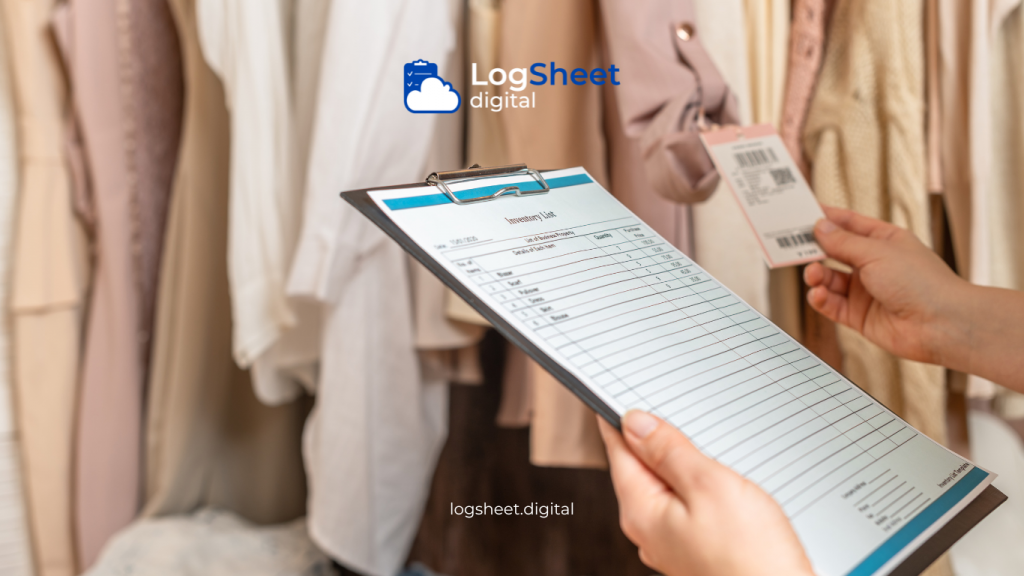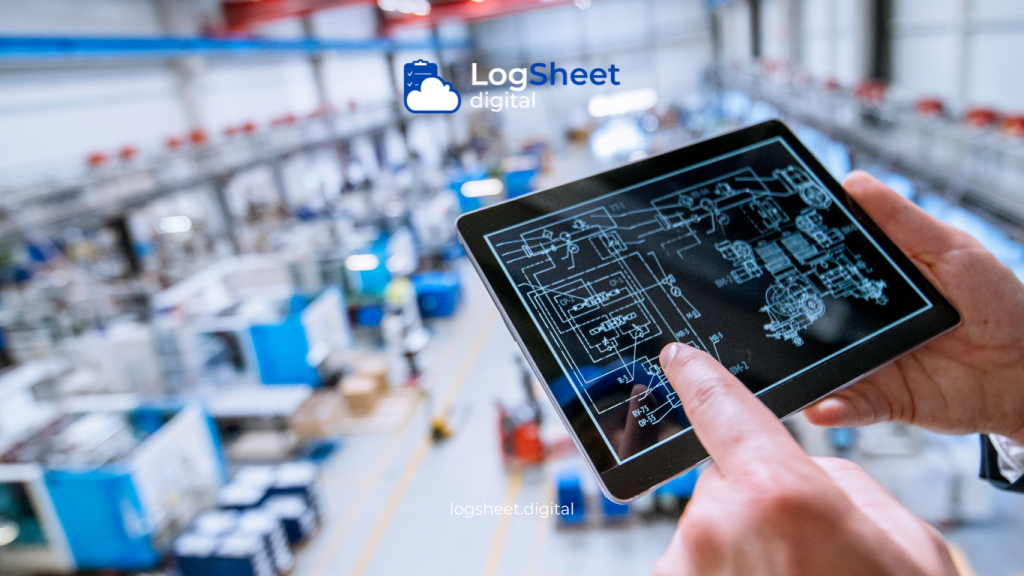Calibration maintenance management is a crucial aspect in the operations of various industries, especially in sectors heavily reliant on measurement tools, such as manufacturing, healthcare, and energy. The accuracy and reliability of measurement instruments are key to maintaining quality, efficiency, and compliance with regulations. However, manual methods of recording and tracking calibration often become obstacles.
In the digital era, digital logsheets provide an innovative solution that allows for more effective recording, management, and reporting of calibration processes. This article will discuss the advantages of digital logsheets in calibration maintenance management, how these systems help improve efficiency, and the strategies for implementing them across various sectors.
The Importance of Calibration Maintenance Management

Read More: Logsheet Digital and the Transformation of Calibration Processes in Industries
Calibration of measuring instruments aims to ensure the accuracy of measurement results. Instruments that are not calibrated may produce incorrect data, which can affect:
- Product Quality: Inaccurate measurements can cause products to fail to meet quality standards.
- Operational Efficiency: Measurement errors can lead to waste of materials or energy.
- Regulatory Compliance: Many industry standards require complete and accurate calibration documentation, such as ISO 9001.
Effective calibration maintenance management ensures that all measurement instruments function according to specifications while minimizing operational risks.
Challenges with Manual Systems

Read More: Improving Industrial Safety with Digital Logsheets
Manual systems in calibration maintenance management face many limitations, including:
- Prone to Errors: Human errors are common in recording or reporting.
- Difficult to Track: Searching for historical data can be time-consuming when all records are kept manually.
- Inefficient: Manual processes require more time and labor.
- Inconsistent Standards: Without a standardized system, calibration processes may vary from technician to technician.
What is a Digital Logsheet?

Read More: Efficiency in Accident Reporting: Digital Logsheets in Safety Equipment
A digital logsheet is a technology-based platform designed to replace manual systems for recording and managing calibration data. With a digital logsheet, data is automatically recorded, stored in a cloud system, and accessible in real time.
Key features of digital logsheets include:
- Integration with IoT Devices: Allows direct data recording from measuring instruments.
- Electronic Archiving: All data is stored in a digital format that is easy to search.
- Automatic Data Analysis: Provides calibration reports and trends for decision-making.
The Advantages of Digital Logsheets in Calibration Maintenance Management

Read More: Optimizing Warehouse and Logistics Efficiency with Digital Logsheets
1. High Data Accuracy
Digital logsheets minimize the risk of recording errors. The system automatically records data, reducing the likelihood of incorrect entries or data loss.
2. Time and Cost Efficiency
Processes that previously took a long time can be completed faster with digital logsheets. Companies can also save on administrative labor costs.
3. Real-Time Monitoring
Digital logsheets allow real-time monitoring of calibration data. Technicians can view the status of instruments needing calibration or upcoming calibration schedules without having to refer to manuals.
4. Process Consistency
The digital system ensures that all processes are carried out according to established operational standards. This reduces the variability in calibration results.
5. Easier Regulatory Compliance
With well-documented and organized data, companies can more easily meet regulatory requirements.
6. Data Analysis Capabilities
Digital logsheets enable the analysis of historical data to identify trends, such as instruments that often need recalibration or those that experience recurring malfunctions.
Implementing Digital Logsheets in Industries

Read More: Implementing Digital Logsheets in Logistics Equipment Maintenance
The implementation of digital logsheets requires careful planning. Here are the steps:
1. Needs Analysis
Identify the specific needs of the company related to calibration maintenance management, such as the number of instruments to be managed or the calibration frequency.
2. Choosing the Right Platform
Select a digital logsheet platform that suits the company’s needs. Ensure the platform is compatible with the measuring instruments being used.
3. Employee Training
Provide training to technicians and administrative staff to ensure they understand how to use the new system.
4. Integration with Existing Systems
Integrate digital logsheets with asset management or ERP (Enterprise Resource Planning) systems for maximum efficiency.
5. Continuous Evaluation and Improvement
It is important to conduct regular evaluations to ensure the system is functioning as expected. Moreover, any processes that are not optimal should be improved based on user feedback. By doing so, continuous enhancements can be made, ensuring the system remains efficient and meets the needs of all users. Consequently, this proactive approach will contribute to long-term success and user satisfaction.
Case Study: Successful Implementation of Digital Logsheets

Read More: Digital Logsheets Innovation in Daily Monitoring and Quality Improvement
A pharmaceutical company in Indonesia implemented digital logsheets to manage the calibration of their laboratory equipment. Before using this system, the company faced issues with inaccurate records and difficulty tracking calibration schedules.
After implementing digital logsheets, the company saw several benefits:
- Time Efficiency: The time needed to process calibration reports decreased by 60%.
- Improved Compliance: All calibration data was well documented, making audits easier.
- Data Accuracy: Recording errors were nearly eliminated due to the automated system.
Challenges in Implementing Digital Logsheets

Read More: Data Security in Digital Logsheets: Challenges and Security Strategies in Workshops
1. Implementation Costs
The initial investment for software and hardware may be a barrier for some companies. However, this upfront cost can be outweighed by the long-term benefits, such as improved efficiency and reduced operational costs. Furthermore, with the right planning and support, companies can gradually recover their investment through enhanced productivity and streamlined processes.
2. Technology Adaptation
Some employees may struggle to adapt to new technology, especially if they are not familiar with digital systems.
3. Data Security
As a digital-based system, data protection becomes a crucial issue. Therefore, the risk of data breaches must be minimized through the implementation of adequate security measures. Additionally, employing advanced encryption methods, firewalls, and multi-layer authentication can further safeguard sensitive information, ensuring that data remains secure from potential threats.
Solutions to Overcome Challenges

Read More: The Benefits of Digital Logsheets in Reporting Compliance and Maintenance in Workshops
- Government Support: Incentives from the government to support digitalization in the industrial sector.
- Ongoing Training: Providing periodic training to improve employees’ understanding of the technology.
- Layered Security: Using data encryption, firewalls, and multi-layered authentication to protect data from cyber threats.
Conclusion

Read More: Logistics Management System with Digital Logsheets
Digital logsheets offer numerous advantages in calibration maintenance management, from higher data accuracy to time and cost efficiency. With this technology, companies can ensure that calibration processes are carried out consistently, on time, and in compliance with regulatory standards.
However, the implementation of digital logsheets requires careful planning and training to overcome existing challenges. With the right approach, companies can leverage the potential of digital logsheets to improve operational efficiency while supporting business sustainability.






leave your comments